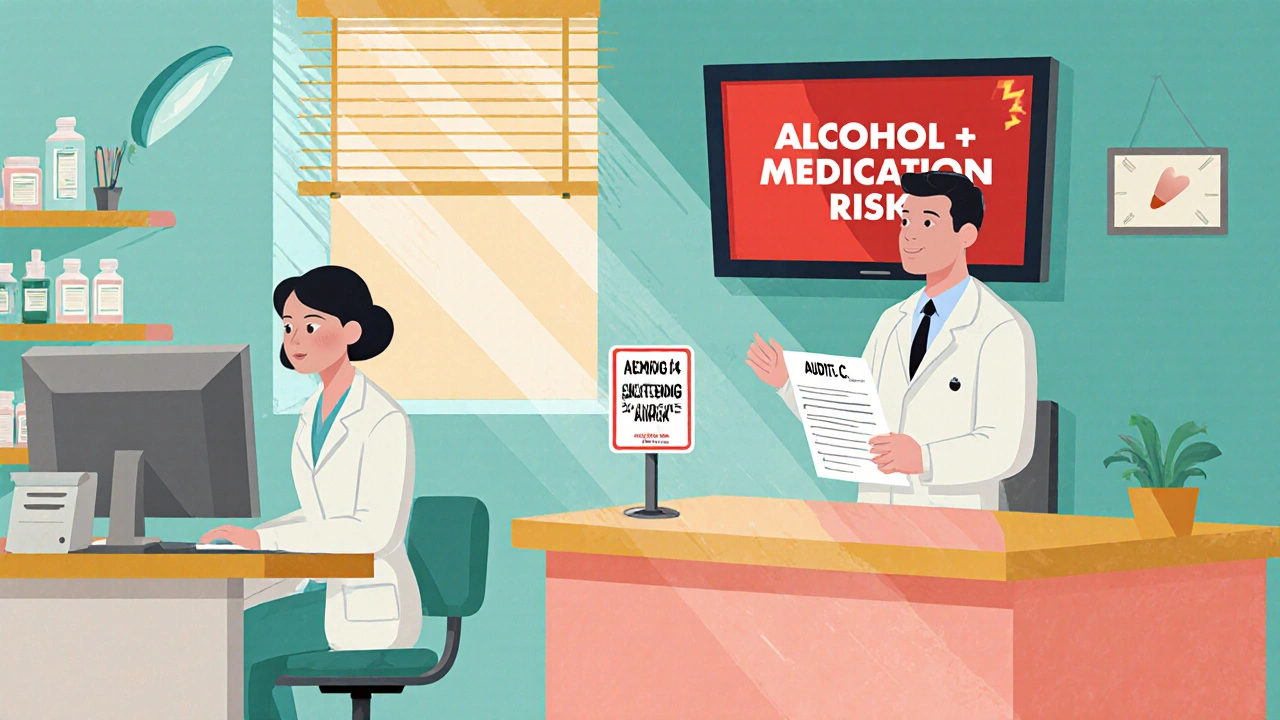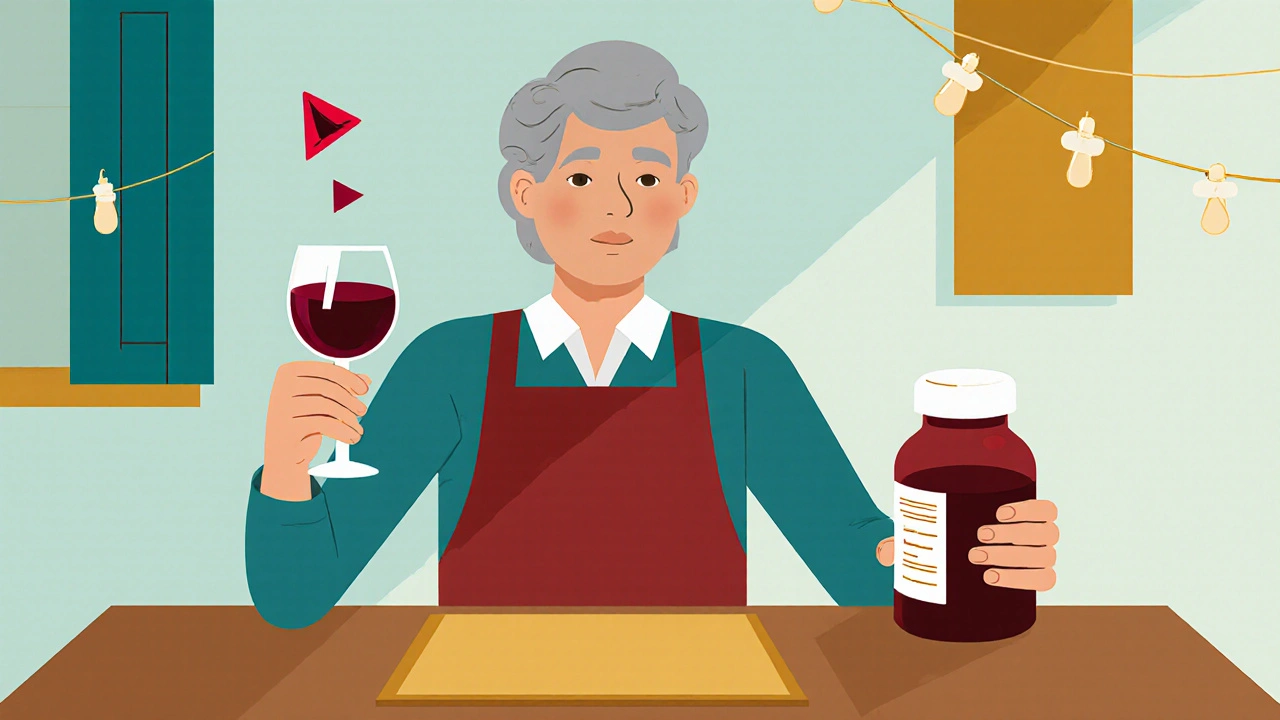Alcohol & Medication Safety Checker
Check if your medication has dangerous interactions with alcohol. This tool is based on FDA guidelines and clinical evidence showing how alcohol affects medications. Always consult with a healthcare professional for personalized advice.
Key Takeaways
- Mixing alcohol with certain meds can cause liver failure, severe bleeding, or fatal overdose.
- Opioids, benzodiazepines, and acetaminophen are the highest‑risk combos.
- Older adults, women, and veterans face amplified danger because of metabolism differences.
- Screening tools like AUDIT‑C and clear label warnings are proven ways to prevent harm.
- Never assume an over‑the‑counter drug is safe with a drink - ask a pharmacist.
Why alcohol medication interactions matter
When you mix alcohol with prescription or over‑the‑counter medication, the body’s chemistry shifts in ways that can turn a harmless pill into a toxic threat. The National Institute on Alcohol Abuse and Alcoholism estimates that 40 % of adults have taken at least one drug that can clash with alcohol in the past year. Even a single glass can amplify side effects, blunt therapeutic benefits, or spark life‑threatening reactions.
How alcohol changes drug behavior
Three core mechanisms drive dangerous outcomes:
- Pharmacokinetic clashes - Alcohol competes for liver enzymes (especially CYP2E1), slowing or speeding up drug metabolism.
- Pharmacodynamic synergy - Both alcohol and many meds depress the central nervous system (CNS), making the combined effect far stronger than either alone.
- Direct toxic reactions - Some combos produce harmful metabolites, like the NAPQI formed when acetaminophen mixes with alcohol, overwhelming the liver’s defenses.
High‑risk drug families
The danger isn’t uniform. Some drug classes pose a dramatically higher risk.
| Drug Class | Typical Interaction | Risk Level |
|---|---|---|
| Opioids (e.g., oxycodone, methadone) | Respiratory depression, dose‑dumping | Very High |
| Benzodiazepines (e.g., alprazolam, diazepam) | Severe CNS depression, falls | Very High |
| Acetaminophen | Hepatotoxic NAPQI buildup | High |
| NSAIDs (ibuprofen, naproxen) | Gastrointestinal bleeding ↑ 3‑5× | High |
| Metronidazole | Disulfiram‑like reaction (nausea, vomiting) | High |
| SSRIs (e.g., sertraline) | Worsened depression, reduced efficacy | Moderate |
| Blood pressure meds | Orthostatic hypotension, falls | Moderate |
Who is most vulnerable?
Age, gender, and health status shape risk:
- Older adults (65+) - lower liver capacity and often take multiple prescriptions; 82 % report at least one risky combo.
- Women - less body water means higher blood alcohol concentration, intensifying drug effects.
- Veterans - higher rates of chronic pain meds and alcohol use, leading to a 30 % involvement in suicide cases.
- People with mental health disorders - co‑occurring substance use raises interaction rates 3.5‑fold.

Practical steps to stay safe
Healthcare providers and patients can break the dangerous cycle with clear actions:
- Use the AUDIT‑C screen during every medication visit to gauge alcohol use.
- Read the Alcohol Interaction Warning on every prescription label - the FDA requires it on ~100 prescription and 700 OTC drugs.
- Ask pharmacists to flag high‑risk drugs (opioids, benzodiazepines, extended‑release formulations) before you leave the counter.
- For antibiotics like metronidazole, wait at least 72 hours after the last dose before drinking.
- Diabetes patients on sulfonylureas should avoid alcohol entirely; those on metformin limit to one standard drink per day.
- Older adults should keep a medication list handy and discuss any drinking habits with their doctor at every visit.
Future directions and emerging tools
Technology is edging in to catch risky combos before they happen:
- EHRs like Epic now fire hard‑stop alerts when a high‑risk drug is prescribed to a patient with a recorded alcohol use.
- Pharmacogenetic testing (e.g., CYP2E1 variants) can predict who’s especially prone to acetaminophen‑alcohol liver injury - a 4.7‑fold risk increase in carriers.
- Public health campaigns such as the CDC’s “Alcohol and Medicine Don’t Mix” (2023) use targeted social media bursts to reach younger drinkers.
Bottom line
Mixing alcohol with medication isn’t a harmless social experiment; it’s a chemistry lesson that can end in emergency rooms or worse. Knowing which drugs turn dangerous, who’s most at risk, and how to talk to doctors or pharmacists can keep you from a preventable health crisis.
Can a single glass of wine hurt me if I’m on prescription painkillers?
Yes. Even one drink can boost the sedative effect of opioids or increase the risk of “dose‑dumping,” where the drug hits your bloodstream faster, raising overdose danger.
What’s the biggest liver risk when I mix alcohol with over‑the‑counter meds?
Acetaminophen is the biggest culprit. Alcohol raises the toxic metabolite NAPQI, and the liver can’t clear it fast enough, leading to acute liver failure.
Do antihistamines like diphenhydramine become unsafe with alcohol?
They become markedly more drowsy and can impair coordination, so driving or operating machinery is unsafe after mixing.
How long should I wait after finishing antibiotics before drinking?
For drugs like metronidazole, wait at least 72 hours. Other antibiotics generally need a 24‑hour gap, but always check the label.
Are there any safe alcohol thresholds for people on SSRIs?
There’s no universally safe amount because alcohol can worsen depression and interfere with the drug’s efficacy. Talk to your prescriber for personalized advice.


Dawn Bengel
Anyone who thinks a few drinks with painkillers is harmless clearly doesn’t respect our nation’s health standards 🙄🍺💊. It’s a betrayal of American common sense and public safety 🚫.